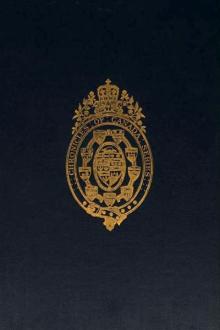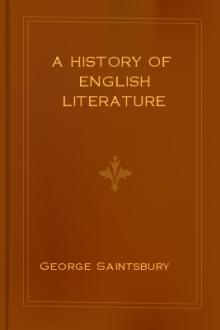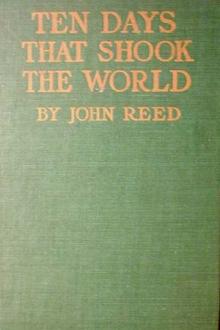The Dawn of Canadian History by Stephen Leacock (each kindness read aloud .TXT) 📕

- Author: Stephen Leacock
- Performer: -
Book online «The Dawn of Canadian History by Stephen Leacock (each kindness read aloud .TXT) 📕». Author Stephen Leacock
Two Corte-Reals were now lost. King Manoel transferred the rights of Gaspar and Miguel to another brother, and in the ensuing years sent out several Portuguese expeditions to search for the lost leaders, but without success. The Portuguese gained only a knowledge of the abundance of fish in the region of the Newfoundland coast. This was important, and henceforth Portuguese ships joined with the Normans, the Bretons, and the English in fishing on the Grand Banks. Of the Corte-Reals nothing more was ever heard.
The next great voyage of discovery was that of Juan Verrazano, some twenty years after the loss of the Corte-Reals. Like so many other pilots of his time, Verrazano was an Italian. He had wandered much about the world, had made his way to the East Indies by the new route that the Portuguese had opened, and had also, so it is said, been a member of a ship's company in one of the fishing voyages to Newfoundland now made in every season.
The name of Juan Verrazano has a peculiar significance in Canadian history. In more ways than one he was the forerunner of Jacques Cartier, 'the discoverer of Canada.' Not only did he sail along the coast of Canada, but did so in the service of the king of France, the first representative of those rising ambitions which were presently to result in the foundation of New France and the colonial empire of the Bourbon monarchy. Francis I, the French king, was a vigorous and ambitious prince. His exploits and rivalries occupy the foreground of European history in the earlier part of the sixteenth century. It was the object of Francis to continue the work of Louis XI by consolidating his people into a single powerful state. His marriage with the heiress of Brittany joined that independent duchy, rich at least in the seafaring bravery of its people, to the crown of France. But Francis aimed higher still. He wished to make himself the arbiter of Europe and the over-lord of the European kings. Having been defeated by the equally famous king of Spain, Charles V, in his effort to gain the position and title of Holy Roman Emperor and the leadership of Europe, he set himself to overthrow the rising greatness of Spain. The history of Europe for a quarter of a century turns upon the opposing ambitions of the two monarchs.
As a part of his great design, Francis I turned towards western discovery and exploration, in order to rival if possible the achievements of Columbus and Cortes and to possess himself of territories abounding in gold and silver, in slaves and merchandise, like the islands of Cuba and San Domingo and the newly conquered empire of Montezuma, which Spain held. It was in this design that he sent out Juan Verrazano; in further pursuit of it he sent Jacques Cartier ten years later; and the result was that French dominion afterwards, prevailed in the valley of the St Lawrence and seeds were planted from which grew the present Dominion of Canada.
At the end of the year 1523 Juan Verrazano set out from the port of Dieppe with four ships. Beaten about by adverse storms, they put into harbour at Madeira, so badly strained by the rough weather that only a single seaworthy ship remained. In this, the Dauphine, Verrazano set forth on January 17, 1524, for his western discovery. The voyage was prosperous, except for one awful tempest in mid-Atlantic, 'as terrible,' wrote Verrazano, 'as ever any sailors suffered.' After seven weeks of westward sailing Verrazano sighted a coast 'never before seen of any man either ancient or modern.' This was the shore of North Carolina. From this point the French captain made his way northward, closely inspecting the coast, landing here and there, and taking note of the appearance, the resources, and the natives of the country. The voyage was chiefly along the coast of what is now the United States, and does not therefore immediately concern the present narrative. Verrazano's account of his discoveries, as he afterwards wrote it down, is full of picturesque interest, and may now be found translated into English in Hakluyt's Voyages. He tells of the savages who flocked to the low sandy shore to see the French ship riding at anchor. They wore skins about their loins and light feathers in their hair, and they were 'of colour russet, and not much unlike the Saracens.' Verrazano said that these Indians were of 'cheerful and steady look, not strong of body, yet sharp-witted, nimble, and exceeding great runners.' As he sailed northward he was struck with the wonderful vegetation of the American coast, the beautiful forest of pine and cypress and other trees, unknown to him, covered with tangled vines as prolific as the vines of Lombardy. Verrazano's voyage and his landings can be traced all the way from Carolina to the northern part of New England. He noted the wonderful harbour at the mouth of the Hudson, skirted the coast eastward from that point, and then followed northward along the shores of Massachusetts and Maine. Beyond this Verrazano seems to have made no landings, but he followed the coast of Nova Scotia and Newfoundland. He sailed, so he says, as far as fifty degrees north, or almost to the Strait of Belle Isle. Then he turned eastward, headed out into the great ocean, and reached France in safety. Unfortunately, Verrazano did not write a detailed account of that part of his voyage which related to Canadian waters. But there is no doubt that his glowing descriptions must have done much to stimulate the French to further effort. Unhappily, at the moment of his return, his royal master was deeply engaged in a disastrous invasion of Italy, where he shortly met the crushing defeat at Pavia (1525) which left him a captive in the hands of his Spanish rival. His absence crippled French enterprise, and Verrazano's explorations were not followed up till a change of fortune enabled Francis to send out the famous expedition of Jacques Cartier.
One other expedition to Canada deserves brief mention before we come to Cartier's crowning discovery of the St Lawrence river. This is the voyage of Stephen Gomez, who was sent out in the year 1524. by Charles V, the rival of Francis I. He spent about ten months on the voyage, following much the same course as Verrazano, but examining with far greater care the coast of Nova Scotia and the territory about the opening of the Gulf of St Lawrence. His course can be traced from the Penobscot river in Maine to the island of Cape Breton. He entered the Bay of Fundy, and probably went far enough to realize from its tides, rising sometimes to a height of sixty or seventy feet, that its farther end could not be free, and that it could not furnish an open passage to the Western Sea. Running north-east along the shore of Nova Scotia, Gomez sailed through the Gut of Canso, thus learning that Cape Breton was an island. He named it the Island of St John-or, rather, he transferred to it this name, which the map-makers had already used. Hence it came about that the 'Island of St John' occasions great confusion in the early geography of Canada. The first map-makers who used it secured their information indirectly, we may suppose, from the Cabot voyages and the fishermen who frequented the coast. They marked it as an island lying in the 'Bay of the Bretons,' which had come to be the name for the open mouth of the Gulf of St Lawrence. Gomez, however, used the name for Cape Breton island. Later on, the name was applied to what is now Prince Edward Island. All this is only typical of the difficulties in understanding the accounts of the early voyages to America. Gomez duly returned to the port of Corunna in June 1525.
We may thus form some idea of the general position of American exploration and discovery at the time when Cartier made his momentous voyages. The maritime nations of Europe, in searching for a passage to the half-mythical empires of Asia, had stumbled on a great continent. At first they thought it Asia itself. Gradually they were realizing that this was not Asia, but an outlying land that lay between Europe and Asia and that must be passed by the navigator before Cathay and Cipango could rise upon the horizon. But the new continent was vast in extent. It blocked the westward path from pole to pole. With each voyage, too, the resources and the native beauty of the new land became more apparent. The luxuriant islands of the West Indies, and the Aztec empire of Mexico, were already bringing wealth and grandeur to the monarchy of Spain. South of Mexico it had been already found that the great barrier of the continent extended to the cold tempestuous seas of the Antarctic region. Magellan's voyage (1519-22) had proved indeed that by rounding South America the way was open to the spice islands of the east. But the route was infinitely long and arduous. The hope of a shorter passage by the north beckoned the explorer. Of this north country nothing but its coast was known as yet. Cabot and the fishermen had found a land of great forests, swept by the cold and leaden seas of the Arctic, and holding its secret clasped in the iron grip of the northern ice. The Corte-Reals, Verrazano, and Gomez had looked upon the endless panorama of the Atlantic coast of North America—the glorious forests draped with tangled vines extending to the sanded beaches of the sea—the wide inlets round the mouths of mighty rivers moving silent and mysterious from the heart of the unknown continent. Here and there a painted savage showed the bright feathers of his headgear as he lurked in the trees of the forest or stood, in fearless curiosity, gazing from the shore at the white-winged ships of the strange visitants from the sky. But for the most part all, save the sounds of nature, was silence and mystery. The waves thundered upon the sanded beach of Carolina and lashed in foam about the rocks of the iron coasts of New England and the New Found Land. The forest mingled its murmurs with the waves, and, as the sun sank behind the unknown hills, wafted its perfume to the anchored ships that rode upon the placid bosom of the evening sea. And beyond all this was mystery—the mystery of the unknown East, the secret of the pathway that must lie somewhere hidden in the bays and inlets of the continent of silent beauty, and above all the mysterious sense of a great history still to come for this new land itself—a sense of the murmuring of many voices caught as the undertone of the rustling of the forest leaves, but rising at last to the mighty sound of the vast civilization that in the centuries to come should pour into the silent wildernesses of America.
To such a land—to such a mystery—sailed forth Jacques Cartier, discoverer of Canada.
The Icelandic sagas contain legends of a discovery of America before Columbus. Benjamin de Costa, in his 'Pre-Columbian Discovery of America', has given translations of a number of these legends. Other works bearing on this mythical period are: A. M. Reeves's 'The Finding of Wineland the Good'; J. E. Olson's 'The Voyages of the Northmen' in Vol.





Comments (0)